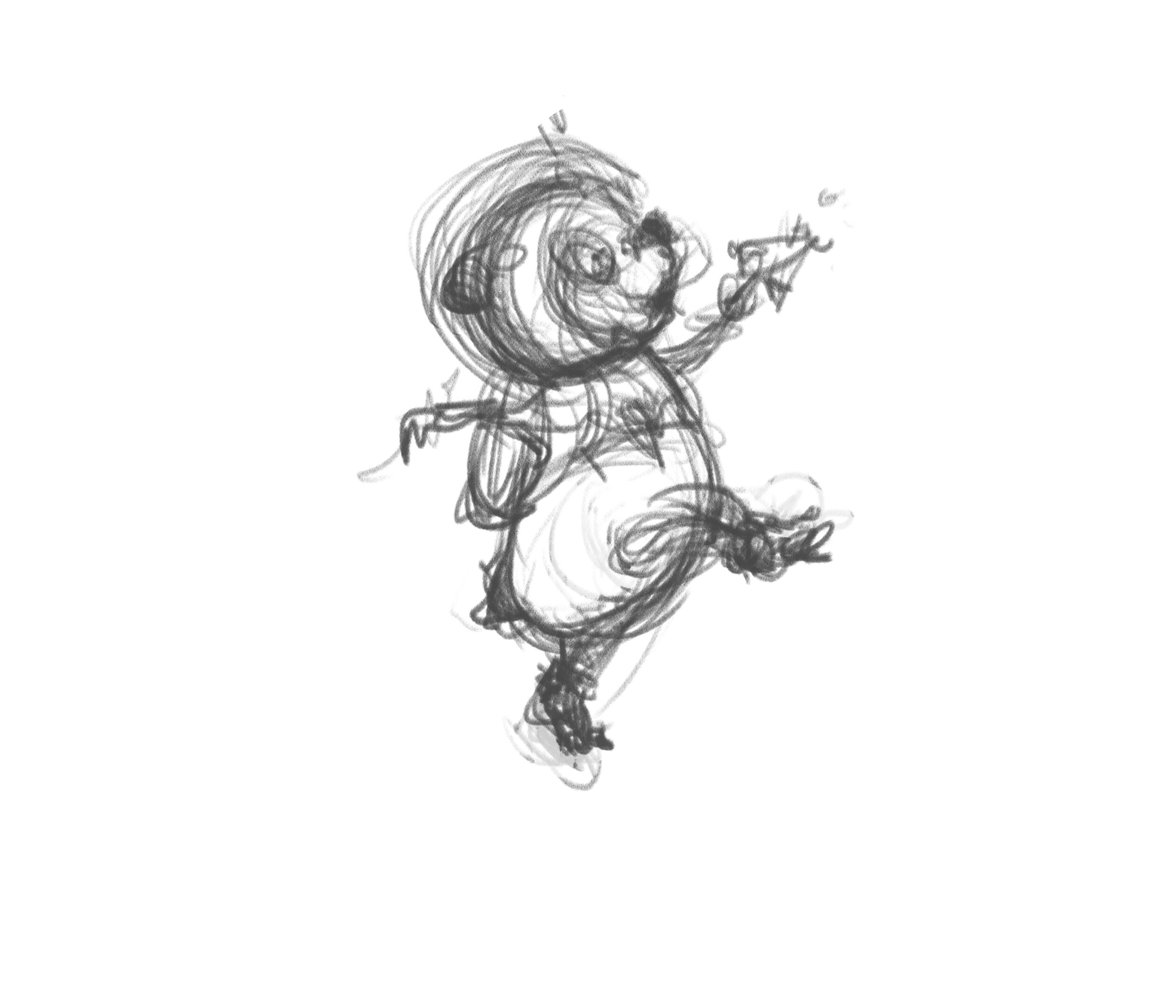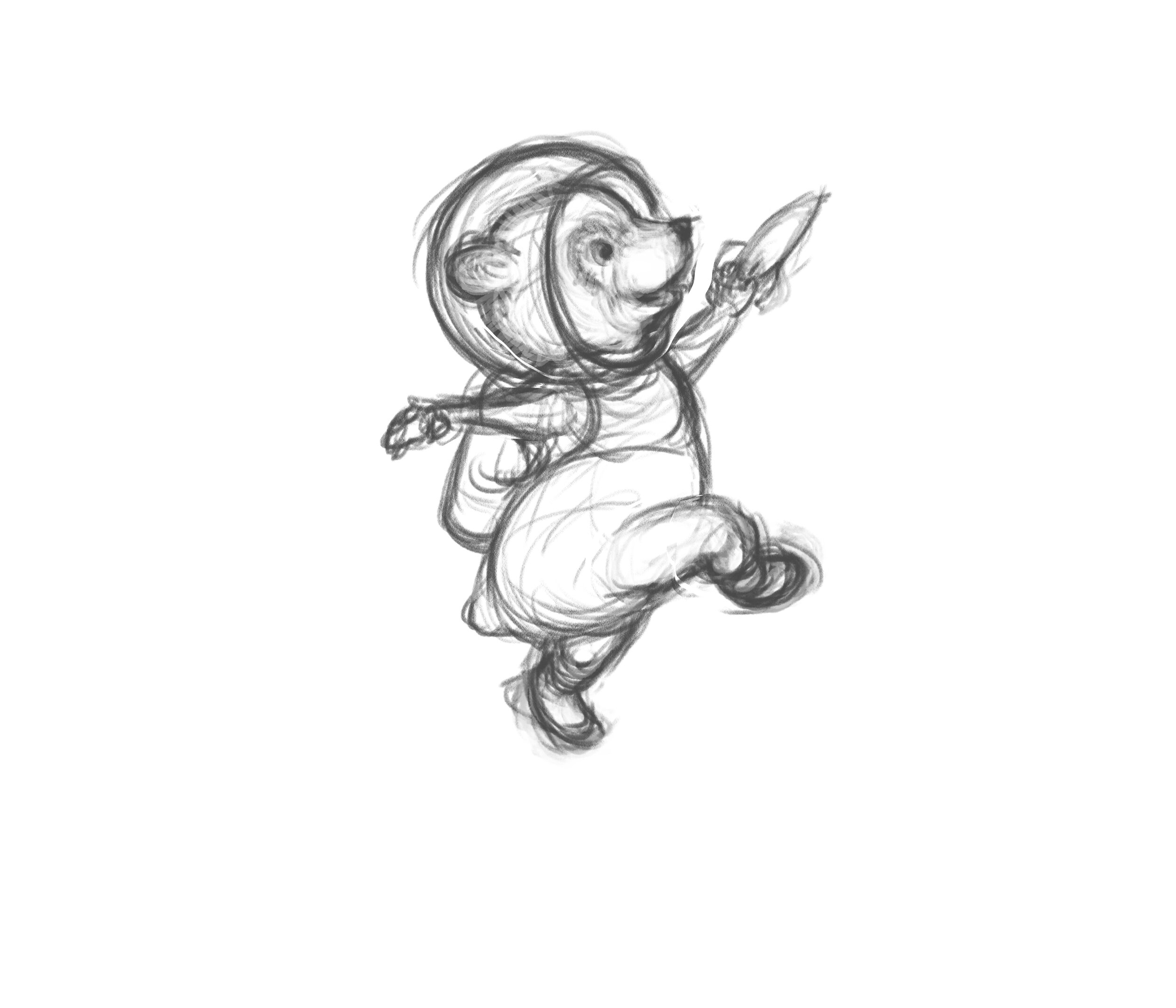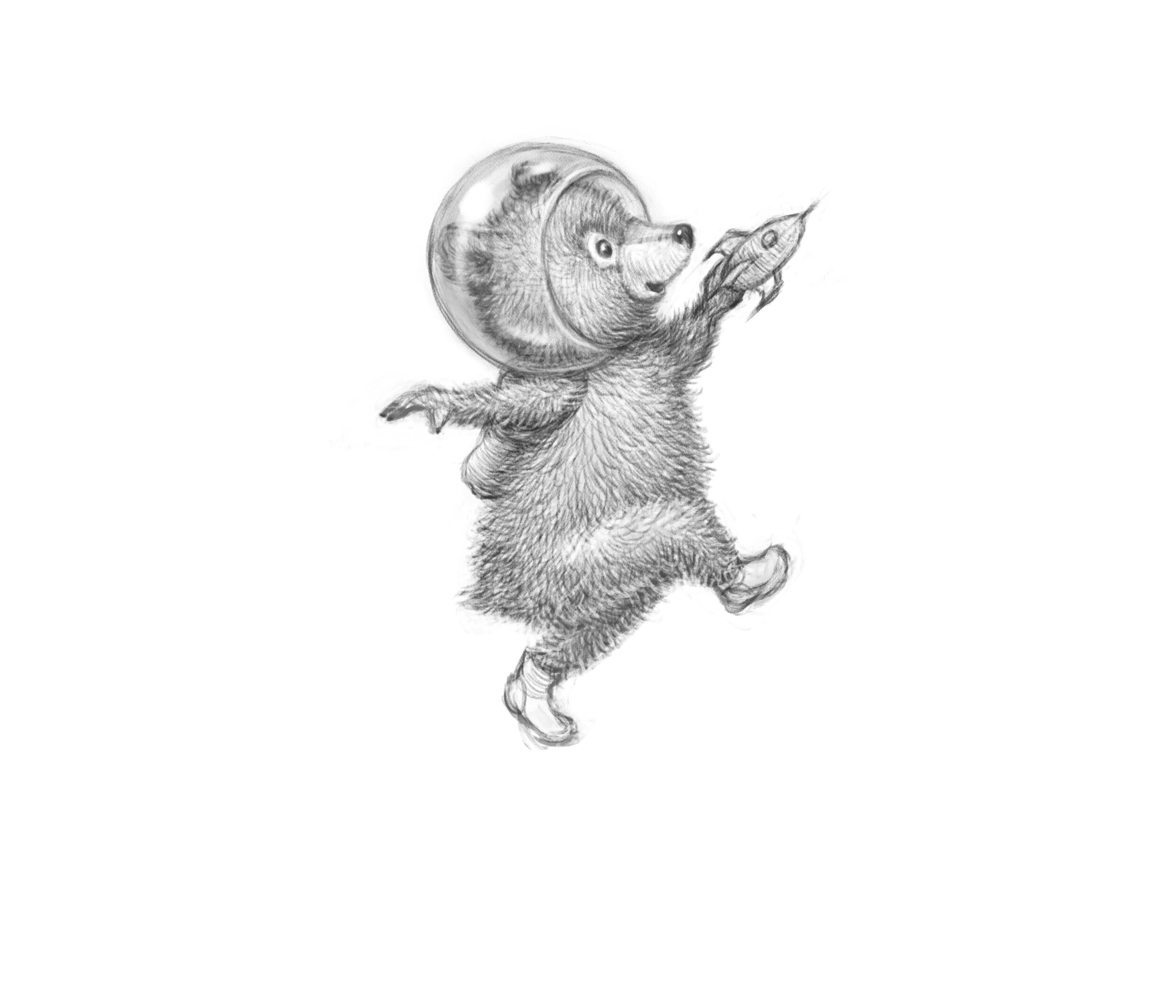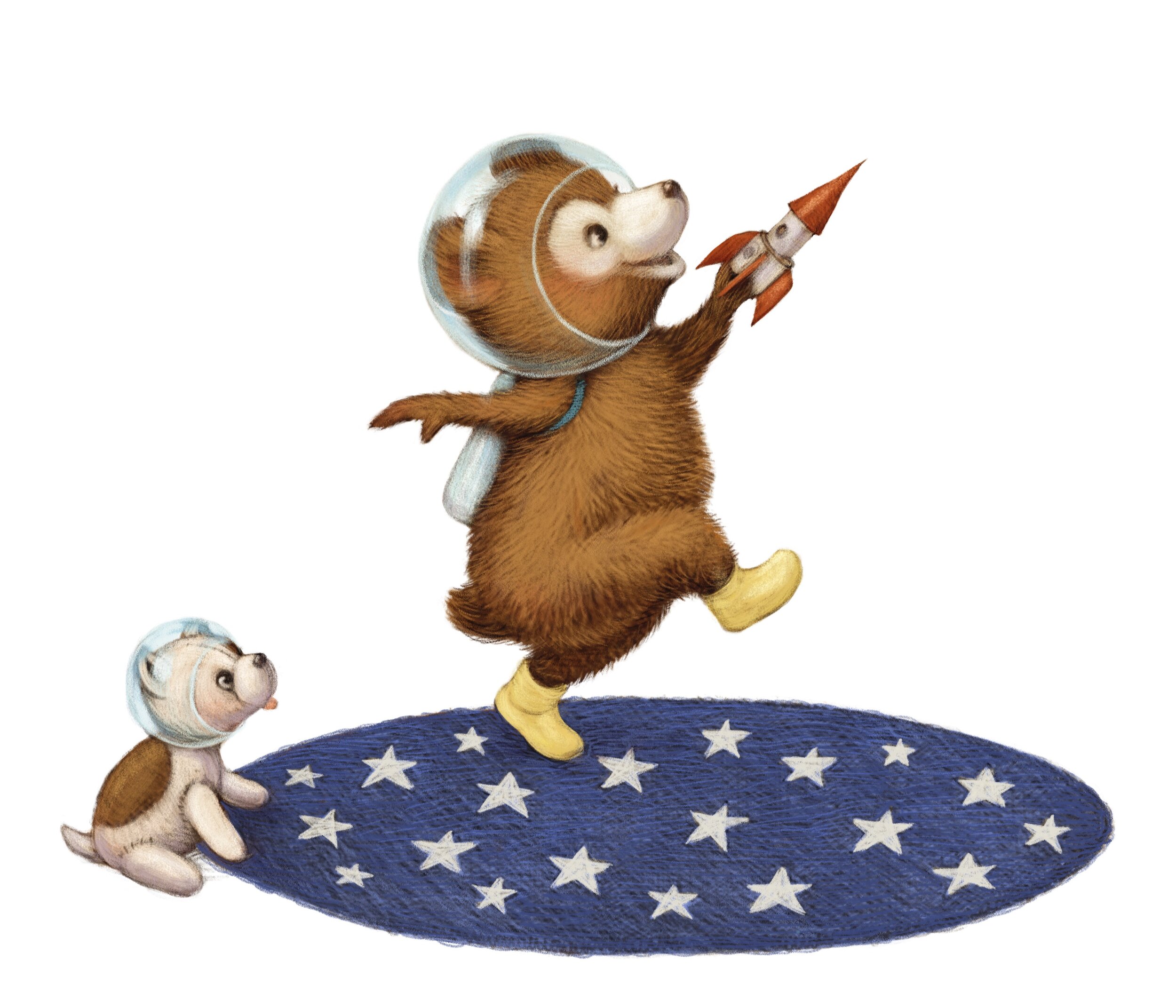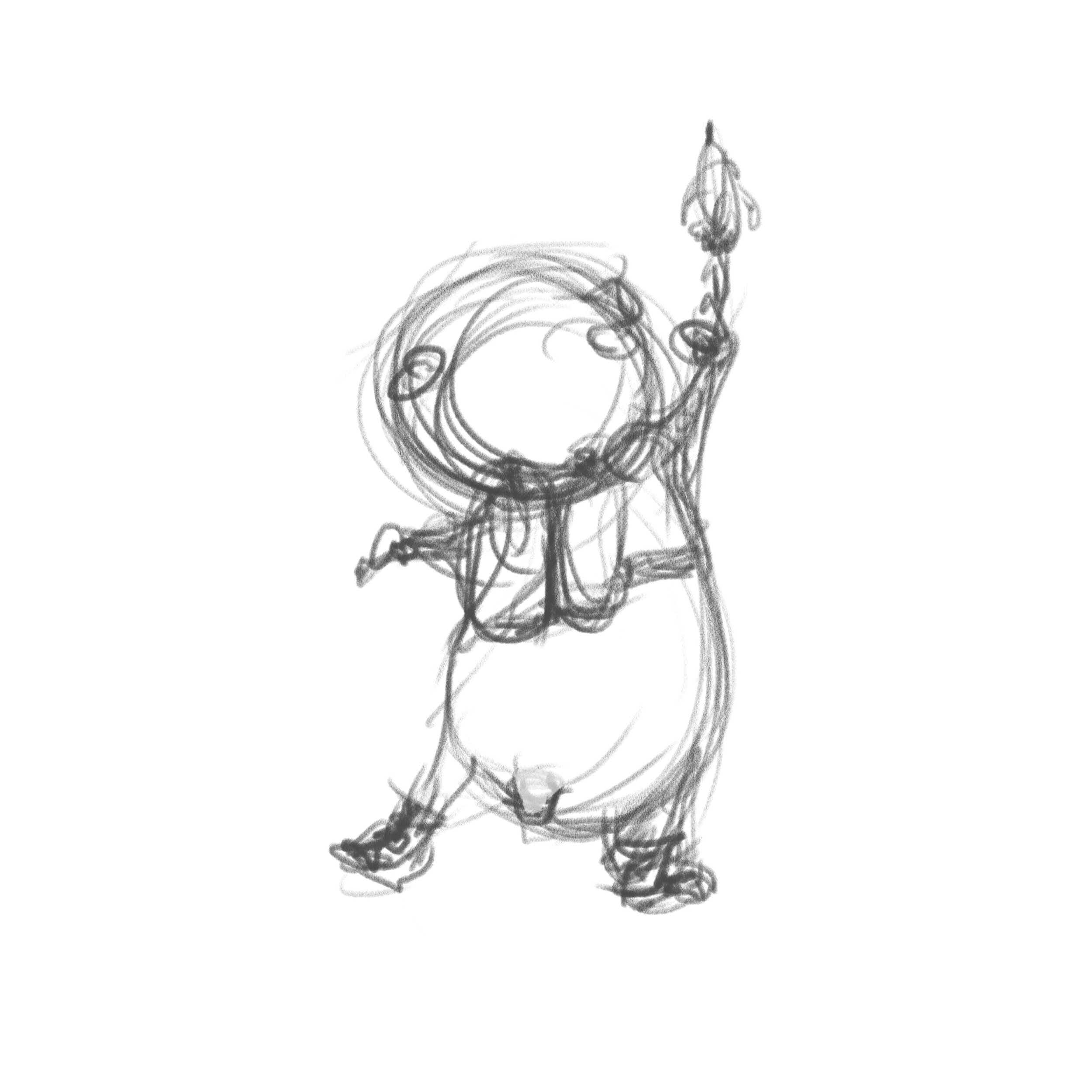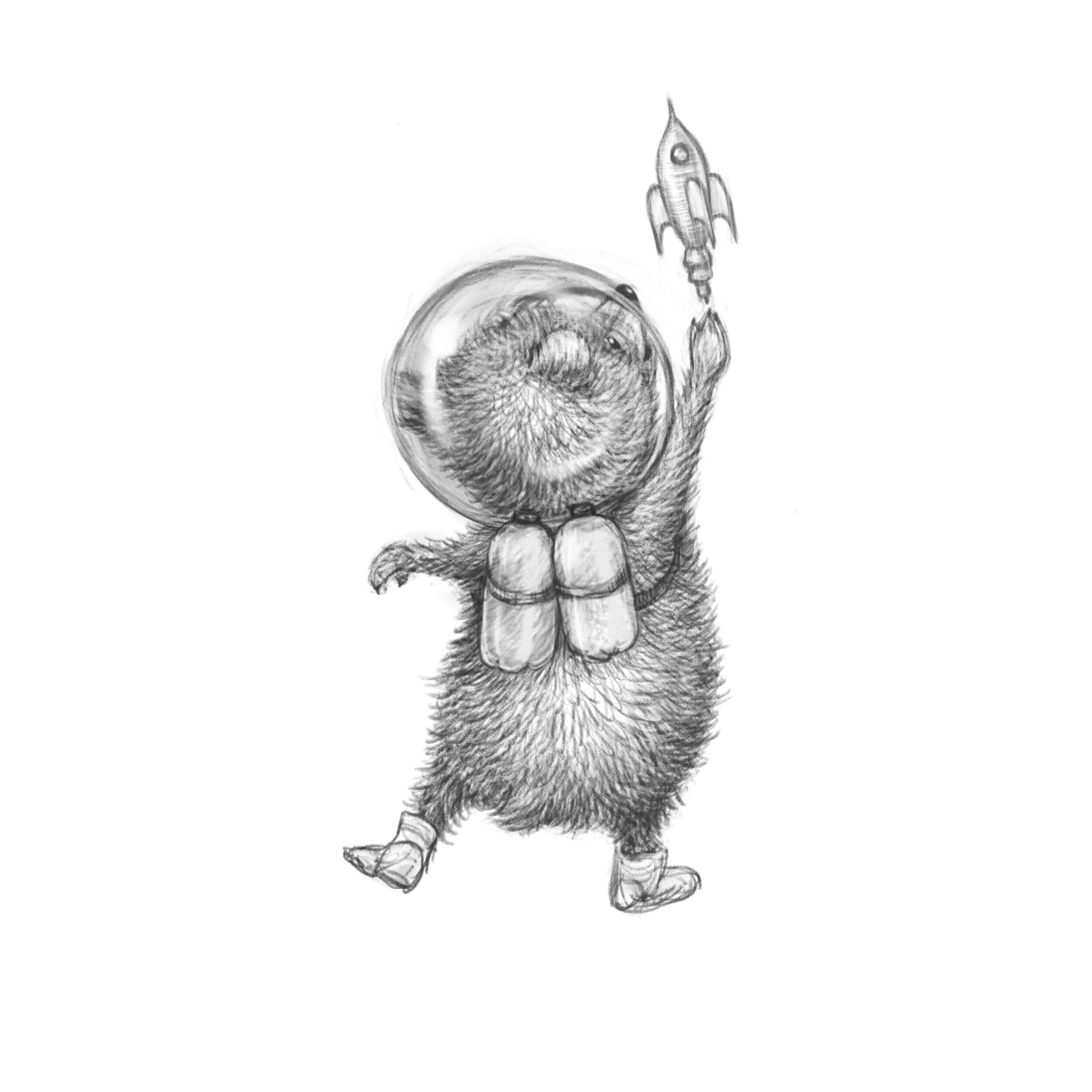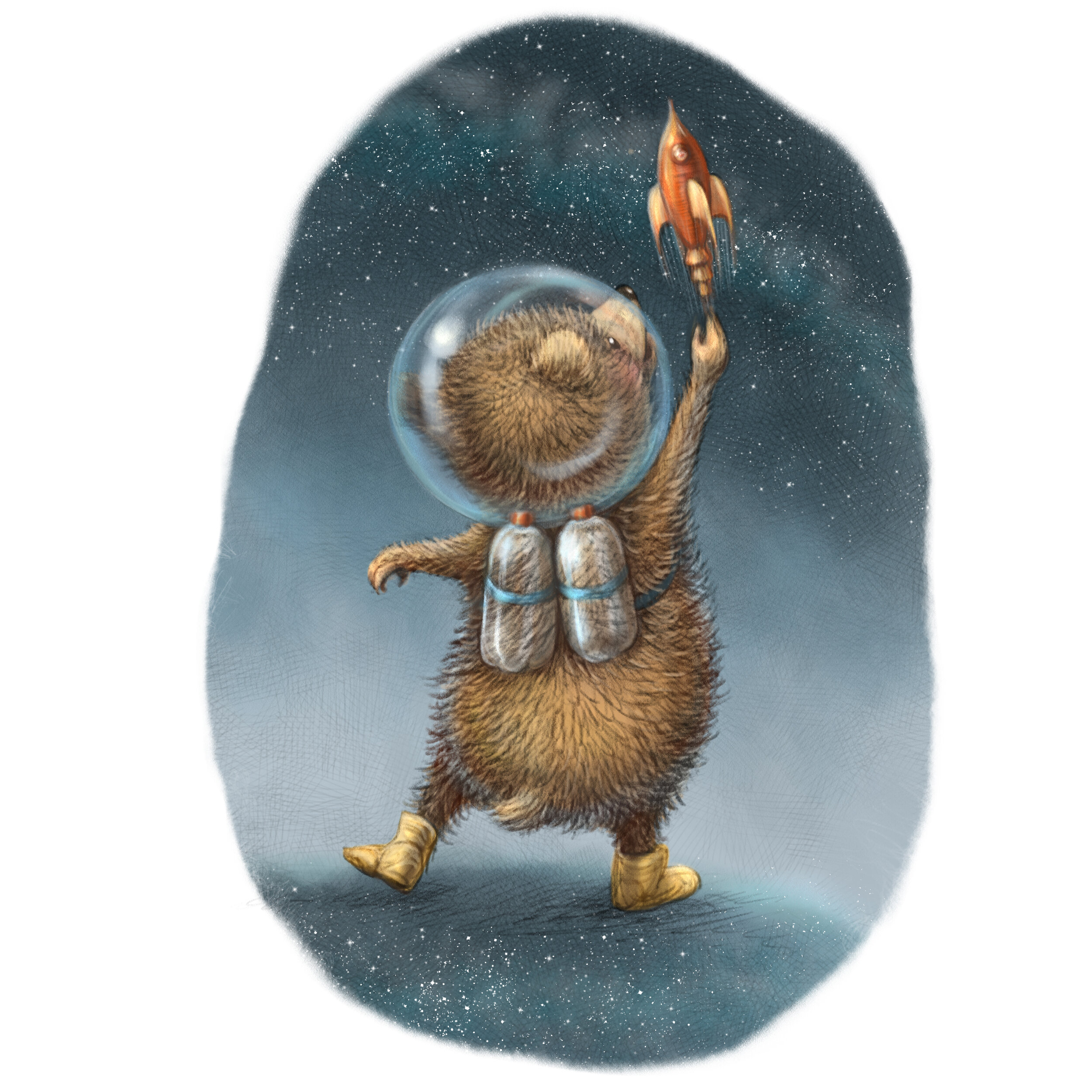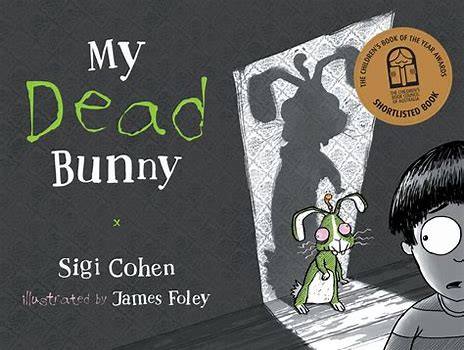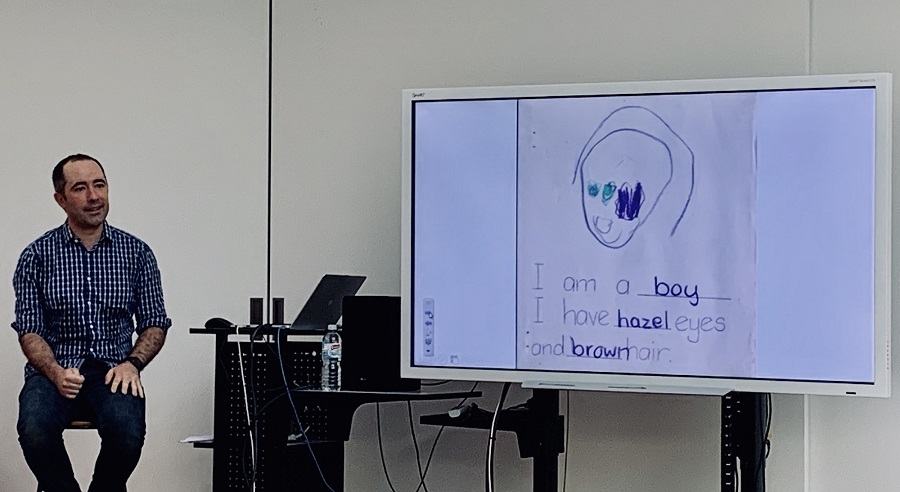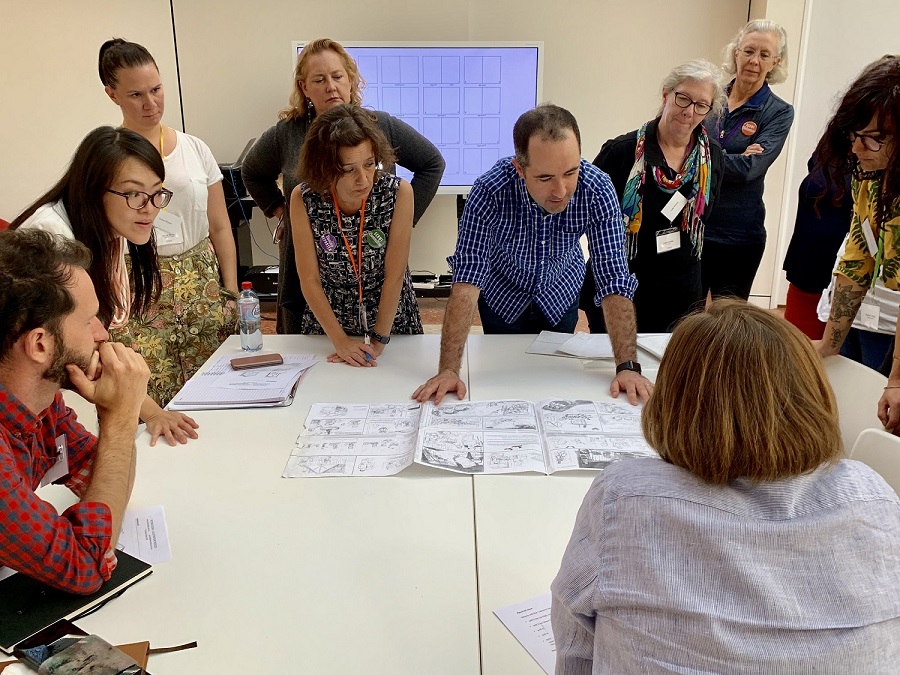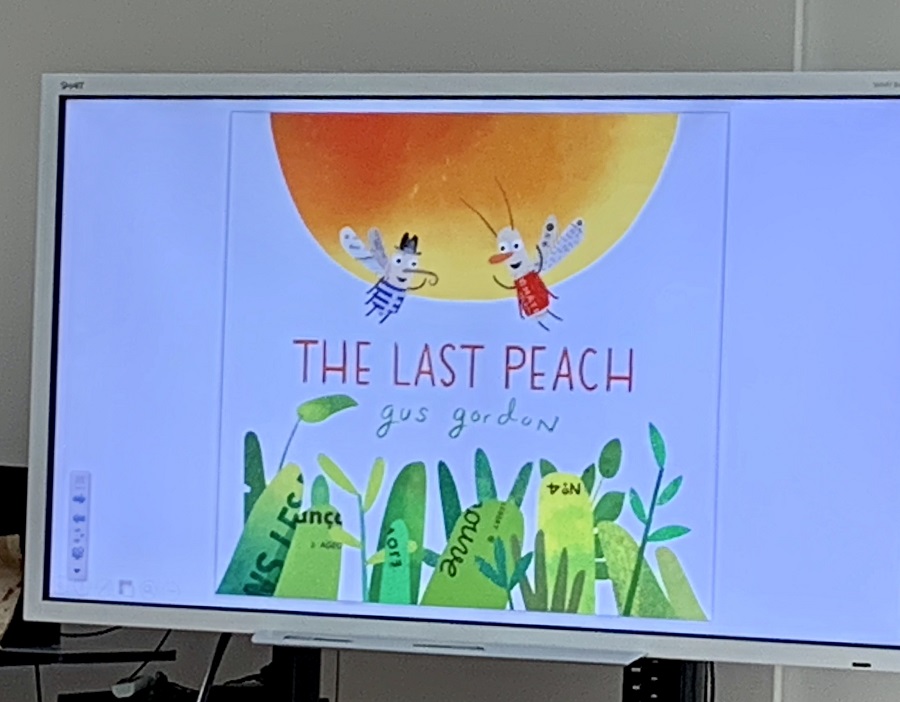by Deborah Abela and Marjorie Crosby-Fairall
WHERE IT ALL BEGAN: A bear and a boy
THE BEAR
In 2015, a group of authors and illustrators went to Taronga Park Zoo, Sydney, for a day of drawing and writing. We chose five locations and it was Deb’s job to give creative prompts at each. One of the destinations was the bear sanctuary.
The creative prompts were:
Bear Declared Hero
Hunt for Missing Bear
First Bear in Space.
It was here we saw Mr Hobbs, a sun bear who’d been rescued from a cage in Cambodia after his mother had been killed by poachers. He’d been deeply affected by the separation and found it hard to relate to the other bears.
Original Sketch and Scribble illustration by Marjorie
As we wrote and drew, I snuck a look at illustrator Marjorie Crosby-Fairall’s sketchbook and saw her picture of a bear floating in space. My writer’s brain immediately began asking:
Why is he there?
What’s he thinking?
Why does he look so happy?
I asked Marjorie if I could write Bear’s story and she agreed. I went away and, being the painfully slow writer that I am, I took a few weeks to get Bear ready. Ten minutes after I sent Marjorie the story, she wrote back saying it gave her chills. Turns out, I’d written about her son.
THE BOY
When Marjorie’s son Cavan was young, he was quirky and analytical and he was obsessed with space. So much so, that when he was due to start preschool, Marjorie and her husband worried he wouldn’t find any friends, but luckily he met another boy who also loved space and they became best buddies.
As a kids’ author and teacher, I’ve always been intrigued by the kids who are different. The ones who don’t quite fit in. I wanted to write a story where difference is celebrated and let kids know that what makes them different is also what makes them unique!
So what’s the story of Bear in Space?
Bear doesn’t always feel at home on earth. He doesn’t quite get the other bears and they often don’t understand him. So he disappears into books, especially about space. When he builds a rocket, and flies into space, no one laughs at him or calls him names, but soon he’s lonely, until something extraordinary happens.
THE PITCH
I pitched the story to Walker Books Publisher, Linsay Knight, who published my first novel, Max Remy Superspy in 2002. She loved the story but asked, ‘Where’s the third act?’
She was right! It ended but there was no ending.
Big difference!
So Marjorie and I created thumbnails to work out the rest of the story. These were crucial in developing not only the artwork but the story. Poring over them, we made sure the story flowed and had a strong structure…including that ending. We spoke about pacing and page turns, character and emotional beats, colour palettes and white space. Where the story needed to be bright and full, and where it needed to breathe.
As many of you know, it’s an unspoken rule that publishers DO NOT like authors and illustrators to work or pitch together, but the story so intrinsically belonged to both of us, we couldn’t imagine not working on it as a team.
So we ignored the rule.
CHARACTER ILLUSTRATIONS
Linsay and art director, Sarah Davis, wanted Marjorie to draw the main character in various poses, to see how he’d look but also gain a sense of his personality. The original Bear sketch from the zoo wasn’t intended for a picture book, so Marjorie needed to rework the character so he was more childlike. These images show the development from the initial sketch to colour studies.
THE BOOK IS CONTRACTED!
Linsay and Sarah loved Marjorie’s drawings and we signed the contract. Phew!
FROM ROUGHS TO FINAL ART
Marjorie took her thumbnails to roughs and when they were approved, to final colour art.
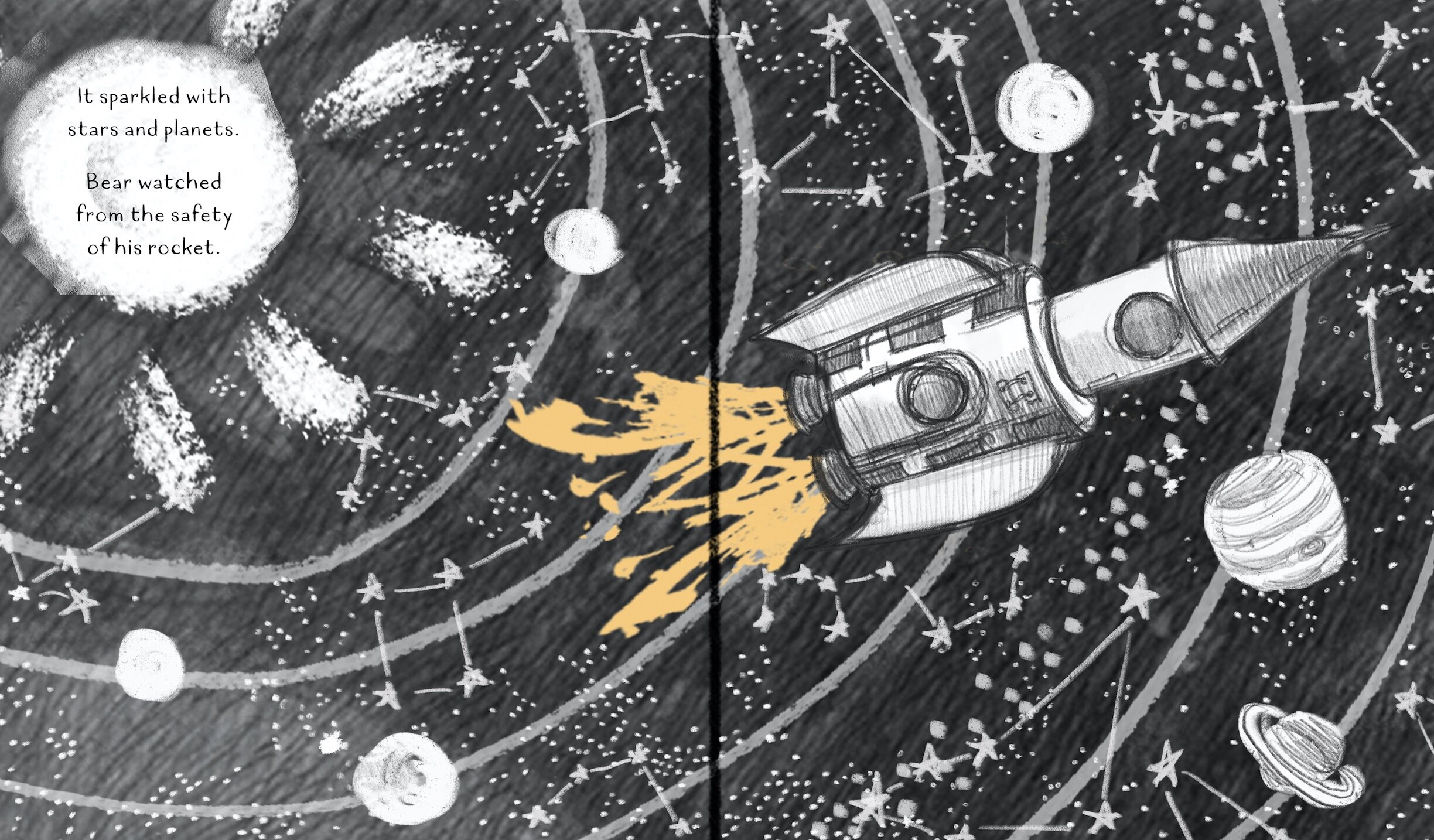

FINALLY
The whole process was collaborative and at each stage, we hashed out ideas, we challenged each other’s decisions and we all fell in love with Bear.
Sometimes it’s good to break the rules, and back yourself. But also, put in the hard work.
For Bear, sometimes it only takes one person to make us feel not so alone. One person who understands us. Bear in Space is about being different and having friends who love us just the way we are.
BIOS
Deborah Abela www.deborahabela.com
Deborah trained as a teacher and was the writer/producer of a national children’s TV show before writing twenty-seven internationally published and awarded kids’ books. There’s her cranky climate change trilogy, Grimsdon, New City and Final Storm, and The Stupendously Spectacular Spelling bee and The Most Marvellous Spelling Bee Mystery.
Marjorie Crosby-Fairall www.crosby-fairall.com
Marjorie has illustrated over twenty children’s books and has been published internationally. Her awards include the CBCA Eve Pownall Award. Her books include The Boy in the Big Blue Glasses with Susanne Gervay, One Christmas Eve with Corinne Fenton, Say Cheese with Frances Watts and Dinosaur Dads with Lesley Gibbes. Bear in Space is Deb and Marjorie’s first collaboration.





